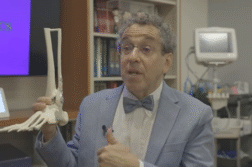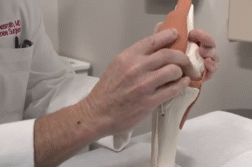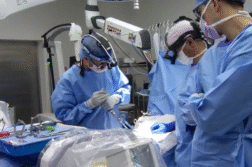WASHINGTON, DC (Ivanhoe Newswire) – Back pain — it’s one of the most common medical problems worldwide. The pain can be debilitating and more than one in four people in the United States suffer from it. Medication, therapies and surgeries can offer relief. And now, for the first time new technology is helping to make fusion surgery more personalized.
Whether it’s cooking up chicken in her kitchen or digging up dirt in her front yard, nothing stops Mary Hall, except she says, “I could not turn my head at all, and it was excruciating pain.”
Mary needed a spinal fusion — and she became the first person in the United States to try a new targeted procedure.
Oliver Tannous, MD, orthopedic spine surgeon from the MedStar Washington Hospital Center explains, “We’re talking about preoperative 3D printed guides that are patient specific.”
Dr. Tannous was the first in the country to perform the MySpine cervical 3d printed fusion.
“The beauty of that is that in the operating room you have a 3D mold of the patient’s spine, and you have a guide that latches onto the spine that allows you to drill the screw directories is in a very accurate manner,” says Dr. Tannous
Traditionally, surgeons would place screws and rods by what they thought was the best spot.
“You have the spinal cord on one side, you have the nerve above or below, and then you have the vertebral artery, which is the artery that feeds the brain on the other side of that screw. So that accuracy becomes really important,” explains Dr. Tannous.
MySpine reduces operating times by up to 50%, there’s less blood loss, and recovery time is faster. For Mary, in less than two weeks she was back at it!
She says, “I started doing a little bit this and a little bit of that, and all of a sudden I’m doing everything and I’m happy as I can be.”
The 3D MySpine technology has been a game changer in the spine, not just the cervical spine but in the thoracic and the lumbar spine as well.
Contributors to this news report include: Marsha Lewis, Producer; Matt Goldschmidt, Videographer; Roque Correa, Editor.
To receive a free weekly e-mail on medical breakthroughs from Ivanhoe, sign up at: http://www.ivanhoe.com/ftk
Source:
https://www.statista.com/topics/4333/back-pain-in-the-us/#topicOverview
MEDICAL BREAKTHROUGHS
RESEARCH SUMMARY
TITLE: FIRST IN THE U.S.: MYSPINE CERVICAL FUSION
REPORT: MB #5399
BACKGROUND: Back pain is the second most common reason why people visit their healthcare providers. Around 80% to 90% of people in the United States will experience back pain at some point in their lives. Daily, about 2% of the U.S. workforce is disabled by back pain, which is the most common reason cited for an inability to perform daily tasks, and one in four people in the US suffer from it. Medical professionals categorize back pain in several ways. You can describe your back pain by its location: upper, middle, or lower back pain that’s on the left side, center, or right side.
(Sources: https://my.clevelandclinic.org/health/diseases/22325-back-pain https://www.statista.com/topics/4333/back-pain-in-the-us/#topicOverview)
SYMPTOMS: There are different types of back pain, Acute, Subacute and Chronic back pain. They can range from local pain in a specific spot to generalized pain spreading all over the back. Sometimes the pain radiates away from the back to other areas of your body, such as the buttocks, legs, or abdomen. The intensity of back pain varies for each person. Depending on the type, causes, and location of your back pain, you may experience things like, increasing pain with lifting and bending, worsening pain when resting, sitting, or standing or pain that radiates away from the back into the buttocks, leg, or hip.
(Source: https://www.niams.nih.gov/health-topics/back-pain)
NEW TREATMENT: MedStar Washington Hospital Center completed the first MySpine® Cervical surgery in the country. Dr. Oliver Tannous, an Orthopedic Spine Surgeon, successfully performed the MySpine Cervical 3D printed cervical fusion on a 77-year-old patient. The patient was hospitalized for two days and resumed daily activities after a few weeks of restrictions. Posterior cervical spine surgery and fusion involve operating on the back of the neck to treat conditions of the back and neck bones, discs, and nerves, to relieve pressure or alleviate pain. Specialized screws and rods are often used to stabilize the neck during these surgeries. It creates patient-specific guides for the precise placement of the screws, reducing operative times and improving patient and surgical outcomes. Before surgery, patients receive a low-dose CT scan, it then converts these CT images and creates 3D anatomical models or guides of the neck. These customized 3D guides help surgeons plan and prepare for surgery, and precisely determine where to place the screws for best outcomes.
FOR MORE INFORMATION ON THIS REPORT, PLEASE CONTACT:
So Young Pak
If this story or any other Ivanhoe story has impacted your life or prompted you or someone you know to seek or change treatments, please let us know by contacting Marjorie Bekaert Thomas at mthomas@ivanhoe.com




